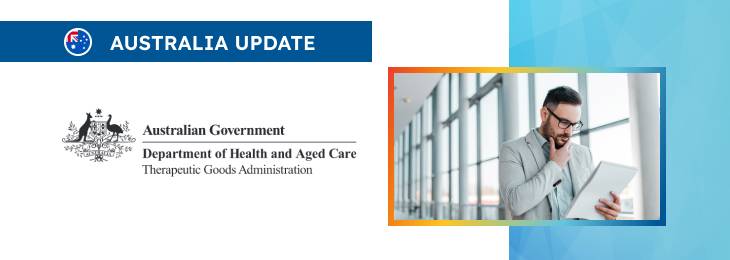The new article describes in detail the key points related to the regulatory requirements applicable to the specific groups of products, namely medical systems and procedure packs.

Table of content
The Therapeutic Good Administration (TGA), an Australian regulating authority in healthcare products, has published a guidance document dedicated to the medical device systems and procedures packs intended to be marketed and used in the country.
The document provides an overview of the applicable regulatory requirements in Australia and additional clarifications and recommendations to be considered by medical device manufacturers and other parties involved to ensure compliance with them.
At the same time, provisions of the guidance are non-binding in their legal nature, nor are they intended to introduce new rules or impose new obligations.
The authority also reserves the right to make changes to the guidance, should such changes be reasonably necessary to reflect corresponding amendments to the underlying legislation.
Classification of SOPPs
First, the document provides an overview of the applicable classification rules for medical device systems and procedure packs intended to be marketed and used in Australia.
According to the guidance, the foundation for classifying medical devices within SOPPs is laid out in Schedule 2 of the Regulations, emphasizing the device’s intended purpose and design features such as invasiveness, duration, and location of use, alongside its reliance on external energy sources.
This section emphasizes the manufacturer’s responsibility in applying all relevant classification rules, highlighting the protocol for devices that fall under multiple classification rules to adopt the highest applicable classification.

Specific Considerations for SOPP Classification
The relevant section of the guidance describes the nuances of SOPP classification, focusing on the principle that the highest classified device determines the overall classification within the pack.
It also addresses scenarios involving in vitro diagnostic (IVD) and non-IVD medical devices with equivalent classifications and the implications of purchasing market-ready medical devices.
It is also important to mention that the interested parties may use an interactive classification tool on the TGA website as a resource for further guidance.
Updated Requirements for SOPPs
The guidance further describes the requirements medical device systems and procedure packs are subject to under the existing legal framework.
Conformity Assessment Procedures
This section outlines the prerequisites for including a medical device in the ARTG, emphasizing the need to adhere to conformity assessment procedures, essential safety and performance principles, and ongoing post-market and record-keeping obligations. It explains that the eligibility for SOPPs should be demonstrated via a particular conformity assessment procedure, detailing the criteria defined in Regulation 3.10.
Regulatory Pathways for Combination Products
The document also provides a comparative analysis of the two available pathways for SOPP manufacturers to comply with conformity assessment procedures.
Option 1 involves obtaining market authorization evidence from the TGA or a comparable overseas regulator, while Option 2 focuses on the particular conformity assessment procedure for manufacturers meeting specific eligibility criteria.
Amended Eligibility Criteria for Supply via Special Conformity Assessment Procedure
The scope of the guidance also covers the aspects related to the Special Conformity Assessment Procedure.
Inclusion Criteria for SOPPs
In particular, the guidance elaborates on the kinds of goods that can be included in an SOPP to meet the eligibility requirements under Regulation 3.10, detailing the considerations for medical devices, medicines or biologicals, and other therapeutic goods.
It emphasizes the assembly and compatibility requirements of the goods included in the SOPP.
Another part of the guidance highlights the additional considerations for SOPPs intended to be supplied in a sterile state, outlining the quality assurance procedures necessary for maintaining sterility throughout the manufacturing process.
Self-Declaration for Class I and Class 1 IVD Medical Devices
Apart from the above, the document addresses the self-declaration compliance for Class I and Class 1 IVD medical devices and SOPPs, specifying that these are not subject to assessment by an independent body or regulator, provided they meet the criteria for “medical devices used for a special purpose”.
Conclusion
In summary, the present guidance document issued by the TGA describes the regulatory expectations and procedural guidelines based on the existing regulatory framework.
The authority pays special attention to the classification rules to be used and also highlights other important considerations related to medical device systems and procedure packs.
How Can RegDesk Help?
RegDesk is a holistic Regulatory Information Management System that provides medical device and pharma companies with regulatory intelligence for over 120 markets worldwide. It can help you prepare and publish global applications, manage standards, run change assessments, and obtain real-time alerts on regulatory changes through a centralized platform. Our clients also have access to our network of over 4000 compliance experts worldwide to obtain verification on critical questions. Global expansion has never been this simple.

